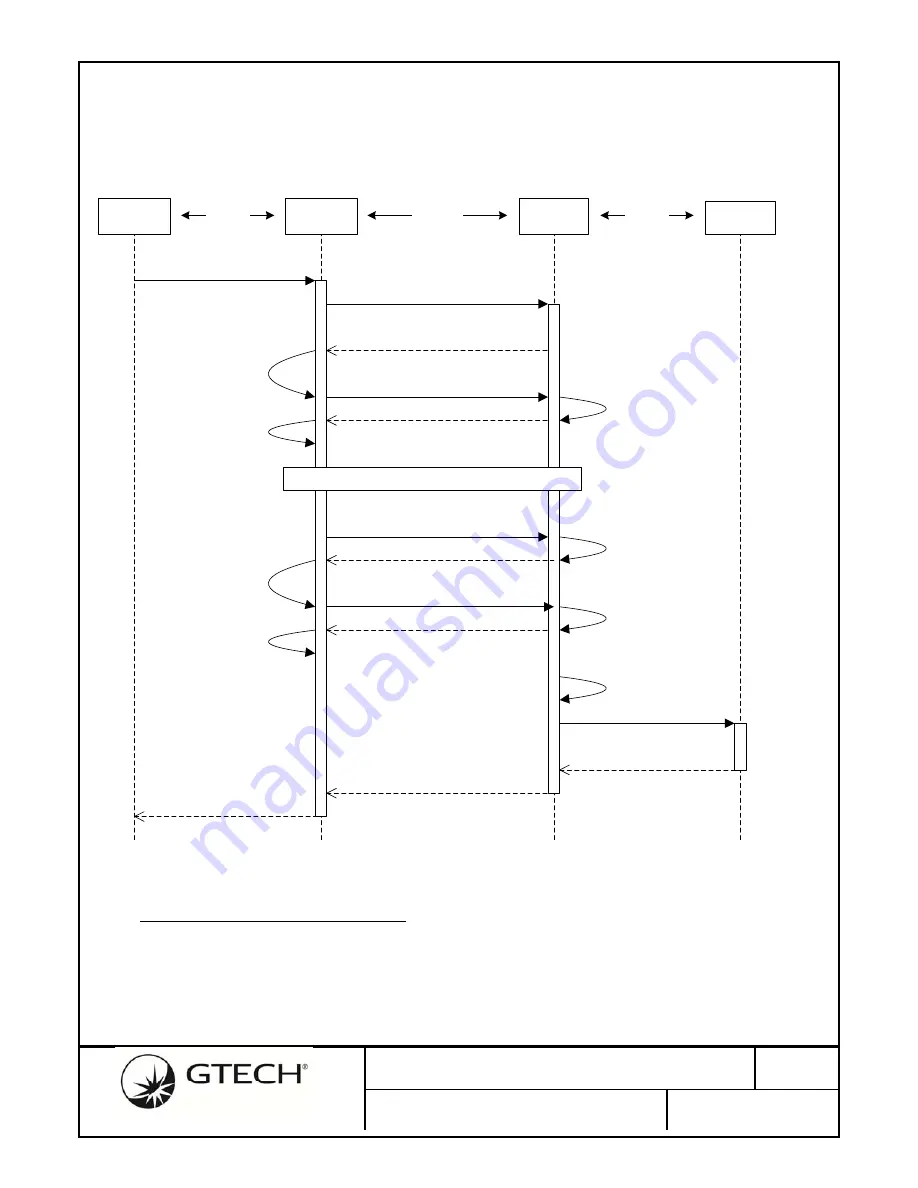
No
. 96-1886-01E
Rev
.
1.1
GTECH Aircon Radio (Model GWT154)
PAGE
29
OF
72
fragment, and the entire packet is discarded. To minimize the radio’s overhead, it does not issue a
Negative Acknowledge (NAK) to the Host CPU, nor does it perform any clean-up of the un-sent
packet fragments. The Host CPU needs to implement a failsafe timeout. After a packet timeout, the
Host CPU may send a new packet to the Coordinator radio, overwriting the serial buffer and triggering
a new RF transmission.
Coordination
Host CPU
Coordination
Radio
Send packet (549Bytes)
24.0ms @ 230kbps
End Device
End Device
Radio
Send packet (1 to 549Bytes)
43.4us to 23.8ms @ 230Kbps
ACK
43.4us
Xmit MAC packet (80Bytes)
3.8ms to 18.5ms (up to 3 retries)
RS-485
RS-485
802.15.4
MAC
length – bytes sent
Xmit ACK (1Byte)
1.2ms to 10.8ms (up to 3 retries)
bytes received
ACK
43.4us
Xmit ACK (1Byte)
1.2ms to 10.8ms (up to 3 retries)
bytes received
Note: Failure to receive any
ACK suspends further MAC
packet transmissions,
requiring timeout
termination
bytes received
bytes received
<= 80Bytes (last fragment)
length – bytes sent
< 80Bytes remain
Length = 0
Repeat as Neccessary
Note: 3.5(character)
idle time terminates
wired serial packet
Figure 15 - Data Fragmentation Sequence
5.6
Fragmentation
Packet
Structure
One byte in the secure 802.15.4 packet payload is allocated for the fragmentation header, leaving a
minimum of 80 user data bytes. The Length/Index field in the fragmentation header has two functions
depending on the state of the fragmentation flag bit. Host CPU serial packets requiring just one RF
packet clear the fragmentation flag and the remaining 7-bit files is the absolute byte-count of the
payload up to the maximum safe 802.15.4 encrypted packets payload size.















































